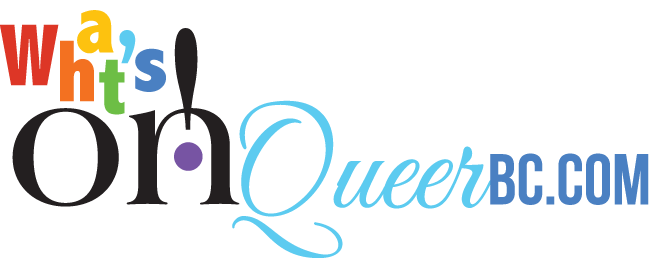What Does Two-Spirit Mean? Reflections for the National Day for Truth and Reconciliation
The National Day for Truth and Reconciliation was first observed in 2021 after Parliament passed Bill C-5, in response to Call to Action 80 from the Truth and Reconciliation Commission
On this day, many people in Canada take time to learn about the history of residential schools and their lasting impact on Indigenous communities. It is also a moment to listen to Indigenous voices and to learn about teachings that have carried forward despite colonial harm. One of these is the identity known as Two-Spirit.
Origins of the Term
The term Two-Spirit was created in 1990 at an Indigenous gathering in Winnipeg. It was chosen by Indigenous people themselves as a way to describe identities that had been misrepresented or erased by colonial language. The English phrase is a translation of an Anishinaabemowin term, niizh manidoowag, meaning “two spirits.” It is not meant as a single definition but rather as a way to reflect the many roles that existed in Indigenous Nations before colonization.
Meaning and Context
Two-Spirit is often described as an umbrella term. It can include gender identity, sexual orientation, spirituality, and community roles, though not every Two-Spirit person identifies with all of these aspects. Many Nations recognized people whose identities combined male and female roles, or who carried unique responsibilities within spiritual or cultural life. Connections to land, kinship, and spirit are central to how the term is understood.
Diversity of Traditions
Each Indigenous Nation has its own languages and teachings about gender and sexuality. Some Nations had specific names and stories for people who today might identify as Two-Spirit. Others had roles within governance, ceremony, or medicine that were reserved for them. Because of this diversity, Two-Spirit is not a single identity but a collective term that acknowledges many traditions across Turtle Island.
Contemporary Use
Today, Two-Spirit is used by some Indigenous people to connect with both their cultural teachings and their place within the 2SLGBTQiA+ community. It is also part of political and cultural resurgence, making space for identities that were suppressed through colonization and residential schools. Many Indigenous-led organizations, including Two-Spirit groups across Canada, continue to share teachings and support for those who carry this identity. We’ve listed some of these groups at the bottom of this article.
Is IndigiQueer the same as Two-Spirit?
Indigiqueer is a more recent word that blends Indigenous and queer. It is often used by younger Indigenous people who want to affirm both their Indigeneity and their identity within the broader 2SLGBTQiA+ community. Unlike Two-Spirit, it does not come from traditional teachings but from a contemporary space that connects queer politics and Indigenous identity. Some people use both terms, while others may prefer one over the other depending on how they see themselves.
***
Two-Spirit is a term that reflects Indigenous knowledge systems and histories that existed long before colonial records. It continues to grow in meaning as Indigenous people define it within their own Nations and communities. Learning from Indigenous-led resources helps keep that understanding grounded in the voices that carry these teachings forward.
Frequently Asked Questions
Can anyone call themselves Two-Spirit?
No. The term Two-Spirit is specific to Indigenous people in Turtle Island (North America). It connects gender, sexuality, spirituality, and culture within Indigenous Nations. Non-Indigenous people should not use the term for themselves.
Is Two-Spirit the same as being gay, lesbian, bisexual, or transgender?
Not exactly. Some Two-Spirit people may also identify with those terms, but Two-Spirit has meanings rooted in Indigenous cultures that go beyond sexual orientation or gender identity.
Do all Indigenous Nations have a Two-Spirit identity?
No. Each Nation has its own teachings, languages, and traditions. Some had specific words for roles that are now described as Two-Spirit, while others may not have an equivalent term.
How is the term used today?
Two-Spirit is used by Indigenous people who want to connect their identity to their culture and community. It is also a way to reclaim histories that were disrupted by colonization and residential schools.
What is the best way to learn more?
The most respectful way is to listen to Indigenous voices and organizations that are led by Two-Spirit people. The references listed below are a good starting point.
Two-Spirit Groups across Canada
Edmonton 2 Spirit Society (Alberta) — provides social, health, cultural programs for 2Spirit, IndigiQueer, and Indigenous LGBTQIA+ communities Edmonton 2 Spirit Society
2-Spirited People of the 1st Nations (Toronto, Ontario) — one of the oldest Two-Spirit organizations, offers programs, advocacy, events 2-Spirited People of the 1st Nations+1
UNYA’s 2-Spirit Collective (Vancouver / BC) — supports Indigenous youth ages 15–30 who identify as 2-Spirit or LGBTQ+ with workshops, ceremony, safe space Urban Native Youth Association
SPECTRUM Indigenous Services (Waterloo Region, Ontario) — Two-Spirit & Indigiqueer circles, cultural programming, community resources SPECTRUM
Two-Spirit Mentors Support Circle (nationwide / youth-focused) — peer support, cultural activities, events for Indigenous 2Spirit youth nativeyouthsexualhealth.com
NEW - Indigenous Queer & Trans Resources In Canada from IN Magazine updated September 2025
https://inmagazine.ca/2025/09/national-day-for-truth-reconciliation-indigenous-queer-trans-resources-in-canada/
References
Qmunity - History of Two-Spirit
Canadian Institutes of Health Research – What Does Two-Spirit Mean?
Egale Canada – Two Spirits, One Voice
Two-Spirit Alliance – Understanding the Term Two-Spirit
BC Human Rights Commissioner – Glossary: Two-Spirit
Note: The writer of this article is not Indigenous. The article was created using information from the Indigenous-led and community-based resources listed above.

